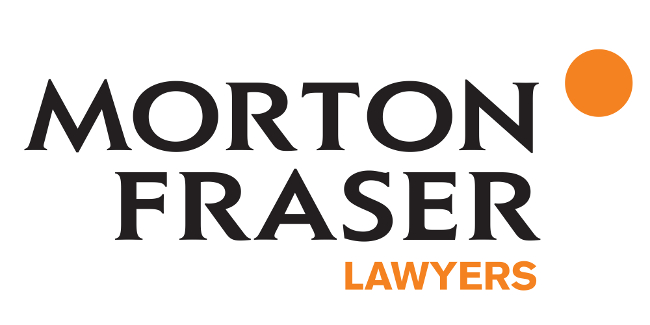Austin Flynn: 30 years in law

Austin Flynn
Surely I must have learnt something.
I started work as a trainee solicitor (or an ‘articled clerk’ as I was then known) in September 1990, qualifying as a solicitor two years later. It’s therefore over 30 years since I was first let loose on the unsuspecting public as a purveyor of legal advice. In that time, I’ve worked in England (Newcastle for seven years) and then Scotland (Edinburgh since 1997).
The legal world has changed almost beyond recognition in the last 30 years: in September 1990 I was given a desk with a telephone (plugged into the wall) and a dictaphone that used micro-cassettes; files were all paper, containing carbon copies of all outgoing correspondence (for those of you who don’t know, ‘cc’ in emails stands for ‘carbon copy’); the only computers in the office were the green-screen Wang word processors in the typing pool; Mary the Tea Lady came to my desk twice a day with a mug of tea and a biscuit for me (Starbucks was still several years away from Newcastle in 1990); telex machines were just being phased out and fax machines were being phased in as the height of sophistication.
In 1990, the large commercial firm in which I trained had three mobile phones that could be used on special occasions if they were signed for, and although it was viewed as being quite cool to borrow a mobile, in fact it was a real hassle as they weighed the same as a brick and you couldn’t exactly slip them into your inside jacket pocket. These days we can search the public record on any UK company via the Companies House website, but in 1990 you ordered a pack of microfiches from Companies House and they arrived by post a few days later; you then spent hours on a microfiche reader (google it) trying to find the document that you wanted. It was a tortuous process. The concept of ‘working from home’ couldn’t have been invented and if you were busy you just stayed late in the office: if there’d been a pandemic in 1990 we’d really have been up the creek, trying to run a law firm from home.
Thirty years later we can effectively run a mobile office from an iPhone, hold conference calls with anywhere on the planet using a variety of platforms (Zoom, Teams, Starleaf etc) and have documents e-signed without the need for a hard copy to threaten a single tree.
So, having started my legal career the year Gazza cried, Waddle hoofed his penalty over the bar and England went out of Italia ‘90 to Germany, what I have learnt? Having thought about it, I think I’ve learnt quite a lot, and I wish I’d known it when I was 22:
-
Meetings are great. Any number of fiddly points can be resolved quickly in a meeting between the parties to the transaction and their respective lawyers. Even if some travelling time is involved, I’ll virtually guarantee that you’ll make more rapid progress and save time and money overall if you sit down around a table for a few hours and turn the pages on the documents. That’s how we did it in the early 90s, but the advent of email meant that drafting meetings went out of fashion - see point 2;
-
Email is not a conversation. Attaching a marked-up share purchase agreement (SPA) to an email and requesting amendments from the other side is not the same as having a drafting meeting – see point 1. Attaching a marked-up SPA to an email is the same as posting a hard copy ‘travelling draft’ to the other side (as we used to do before faxes) or faxing it (as we did before email). Email is snail-mail, only faster. Perhaps the 2021 hybrid answer is to have drafting meetings using Zoom or Teams;
-
Buying and selling companies is not an academic exercise. Some lawyers these days seem to think that buying and selling companies is all about demonstrating legal technical excellence. That’s not the case – technical excellence is assumed, but buying and selling companies is all about concluding transactions in such a way that (i) the deal gets done; (ii) the commercial risks are managed on a balanced basis; and (iii) the parties can move on and still sleep in their beds at night – see point 4;
-
Lawyers simply manage risk on behalf of clients. Our job is generally not to try and conclude a deal so as to remove all commercial risk for our client by clever drafting. Even if that was the aim, it’s rarely, if ever, possible to remove all commercial risk, and the majority of clients accept that. Clients are commercial people who assess risk and decide whether to accept it. Also, there’s never a ‘no risk’ position as life is full of risks. Our job is to discuss and agree with our clients what level of risk they’re prepared to accept, and then document that. I’ve lost count of the number of times I’ve been involved in a deal where the single biggest commercial risk is that one of the parties gets fed up and walks away from the deal because one of the lawyers is making a meal of something and losing sight of the bigger picture. (Sometimes, however, that may be no bad thing as not doing the deal can sometimes be less risky than doing it);
-
Identify the key aims at the start of a transaction and use them as a touchstone. I learnt this one years ago when I sat down at the start of a share sale with a client who said that he wanted three things: (1) £20m for his company; (2) all of the IP that the company owned, and which he would license back to the company post-sale; and (3) a release of the personal guarantee that he had given of the company’s obligations. My job was to assess the extent to which any commercial point that arose during the transaction might detract from the three objectives or expose my client to unusual risk. If it didn’t (if it was just ‘noise on the line’, as my client put it) we accepted the point and moved on; otherwise we would discuss it, assess the risk with the three objectives in mind, and take a view. I duly wrote the three aims on a piece of paper at the start of the transaction and kept it in my wallet. We spent the best part of six months negotiating the deal, including regular trips to London (for drafting meetings – see point 1) and, when it completed, my client and I headed out for celebratory completion drinks. On the way to the pub I produced the piece of paper and told my client that £20m was sitting in my client account and that a CD with the IP on it was in my briefcase along with a release of his personal guarantee. All of the other bits of paper that had been generated in the transaction were simply noise on the line, or just a means to achieving the key aims; and
-
Expect the unexpected. Just when you think you’ve seen all of the bizarre things that can crop up on a transaction, something novel happens. Whether it’s finding out two days before completion that your client doesn’t own the company that she is trying to sell (I was suspicious when my repeated requests to see the statutory books were ignored); or having to try and arrange a babysitter so your client is free to sign documents; whether it’s the discovery at the eleventh hour that your client is unexpectedly stuck in transit in a far-flung airport when he should have been in your office to sign the deal; or the revelation that the seller of a company is genuinely prepared to walk away from a £5,000,000 pay-day because of a dispute over £3,000 of Air Miles (‘it’s a matter of principle’), the things that can chuck a spanner in the works of a transaction are often not legal points at all. However, they have to be dealt with and are just part of life’s rich tapestry.
In spite of the advances in technology that have benefited us all, including the legal profession, in the last 30 years, the job of a transactional lawyer hasn’t really changed fundamentally since I started doing it. We may have more ways of communicating easily, but the lessons that I have learnt are as valid as they were when I first learnt them. Without tempting fate, it’s hard to see that changing much.
However, if I’m still practising law in 2051, I’ll let you know.

Austin Flynn is a partner at Morton Fraser








